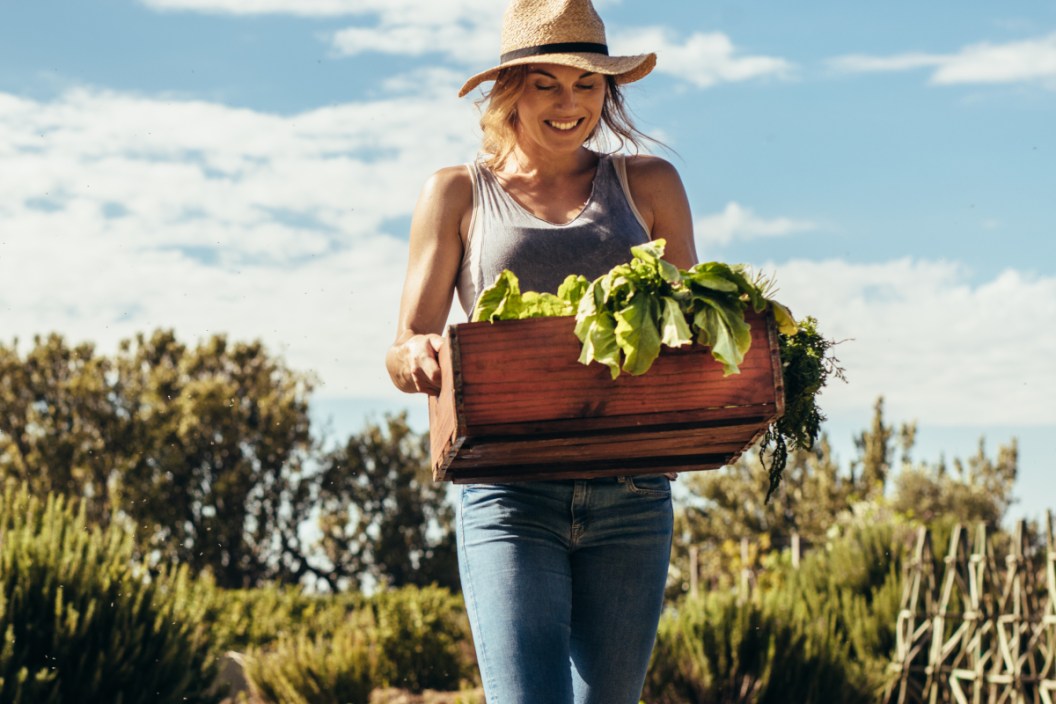These five homestead crops are just the beginning of what you should be growing on your land.
Whether you're gardening to feed your family, or starting a homestead from the beginning, there are certain staples that are across-the-board requirements for almost any successful piece of land. They should be relatively easy to grow, harvest, and store with a good calorie yield to provide the nutrition you will need for the leaner months.
Most importantly, food storage and preservation qualities are the likely key aspects to consider when selecting staple crops. Remember, we're not talking about dieting, but what should a part of your diet to increase your caloric intake when your body is working extra hard to reap the benefits of your own land.
These are the basis of starting a good quality garden to have some early success both during the growing season and beyond. Let's take a quick look at each and what they "bring to the table."
Homesteading Definition
According to Our Documents, "The Homestead Act, enacted during the Civil War in 1862, provided that any adult citizen, or intended citizen, who had never borne arms against the U.S. government could claim 160 acres of surveyed government land."
The Homestead Act helped to accelerate the settlement of western U.S. territories and became a symbol of every homesteader's fervor to fend for themselves instead of relying on a grocery store. This isn't to say that some big business operators (speculators, miners, lumbermen, and railroads) didn't grab up some of the available lands, only that anyone with the work ethic to grow their own fruits and veggies, and make good, honest use of the land were more than entitled to do so.
Kale, Collards, and Cabbage
These well-related family of cold-hardy vegetables can be cut and then regrow themselves with a bit of safeguarding to keep them free of pests organically to ensure that they continue their ability to be harvested year round.
There are many good cabbage growing guides to give you a head start towards having one of the best sources of calcium you can grow. It can stay in the garden rather late into fall. It also stores in a root cellar or cold greenhouse quite well.
Winter Squash
Here is where you will get a healthy dose of fiber and vitamins A and C. Some varieties such as butternut, are considered maxima like Sweet Meat. They can reach size proportions up to 20 pounds. Areas with a longer, warmer summers tend to grow a squash with a bit more resistance to vine borers for certain types.
Winter squash can be stored in a shed or other enclosed area until frost. Although you'll want to move them to a frost-free location by the time the weather turns really cold. The great thing about this crop is the high yields. They can sometimes yield 50 to 80 pounds while growing in just 100 square feet of garden.
Dry Beans
Maybe the most common of the staple crops, dry beans might only average around two to four pounds or more of crop per 100 square feet. But they enhance the quality of food stores for a homestead due to their high calorie content.
Quality cool-weather legume crops are peas, favas, garbanzos and lentils. Others, such as green beans aren't meant for dry storage (besides canning) and grow best in warm weather. Black beans, red beans and limas are popular types including cowpeas, often called "Southern peas" just to name a few.
Grain Corn
Since we're discussing homesteading, it needs to be said that certain types of corn are meant for providing grains for your table, others for immediate eating. Basically speaking, there are three kinds: flint corn, flour corn, and dent corn. (What most of us call field corn.)
Flint corn is probably most common since it is well suited to cooler, wetter climates. The downside is it is the most difficult to grind. You can store and then grind all these types for use in your polenta or johnnycakes, but most prefer the flint variety.
Potatoes
Along with grain corn, potatoes and sweet potatoes garner the highest amount of calories while using the least amount of space to grow in. They are incredibly easy to grow in multiple climates. Especially in areas with cooler summers where they can be planted early to yield a harvest in 60 to 90 days, almost like clockwork.
Potatoes are very easy to store, but do the best at around 45 to 60 degrees, depending on the variety. We always kept them on the stairs of the basement walkout, winter and summer, and they would last seemingly forever. If you're growing a survival garden, this is a crop that will last a very long time.
Staple Crops
Grains, legumes, and starchy foods like potatoes are common staple crops in many regions of the world. Staple crops constitute what foods are eaten routinely and in such quantities that it constitutes a dominant portion of a standard diet.
When you are starting a homestead, or just an average staple garden, you will want to grow foods that create the most calories by volume in the area that they are grown in. It doesn't have to be that scientific, just know that these items still need some maintenance during the growing season, and after they've been harvested.
Other varieties include rice, wheat, millet, and sorghum. Just be aware these need more space and a higher amount of care.
You will want to build up your food supply as you continue learning about growing, harvesting, storing and cooking these staple crops. You'll want to do this while discovering what works well for your area so you can compare it with the new varieties you'll want to explore trying in the future.
Growing your own food is as much about self-sufficiency as it is about health and well being. Having a small space shouldn't mean that your vegetable garden bed won't yield the best crops. Just make the best of the garden space that you do have.
Products featured on Wide Open Spaces are independently selected by our editors. However, when you buy something through our links, we may earn a commission.
Looking for a new way to display those antler sheds? Go to Rack Hub and use the coupon code Craiger. Be sure to follow my webpage, or on Facebook and YouTube.
NEXT: HOW TO TURN JUNK MAIL INTO UNLIMITED FREE FIREWOOD
WATCH





